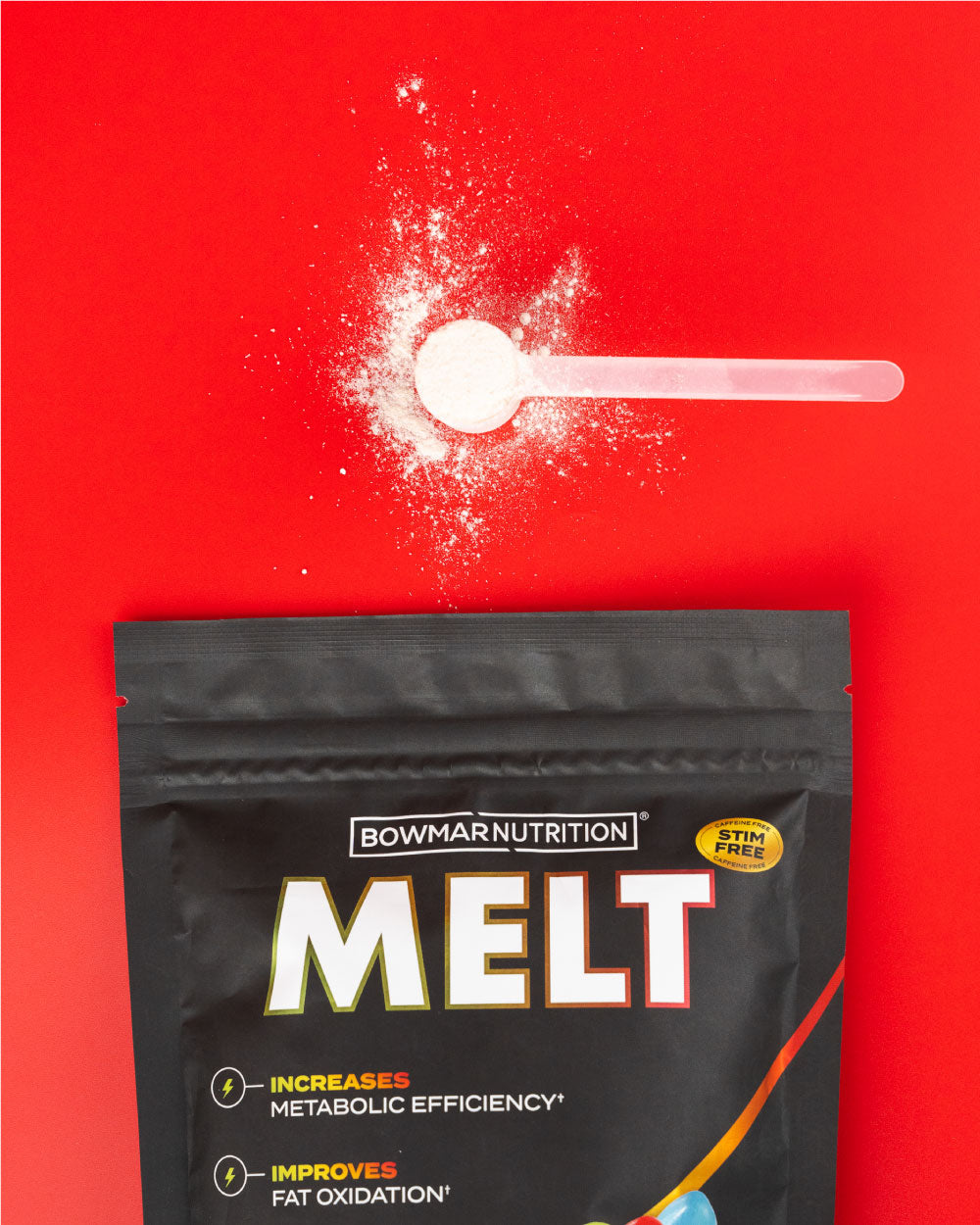We know there’s a TON of information out there regarding weight loss, here at Bowmar Nutrition we want to ensure we educate and provide customers, YOU, with the information needed to reach your goals. Whether you are looking to cut for a special event, start your weight loss journey, or just want to lose a few pounds, below you will find all the details you need to get started!
How To Lose Weight:
In order to lose weight, you have to be in a calorie deficit, meaning you need to be consuming less calories than you burn. Your calorie intake should be between your basal metabolic rate and total daily energy expenditure. Before we go any further, let’s break both of those numbers down.
Your basal metabolic rate (BMR) is the amount of calories you burn without activity/exercise. It’s the calories you burn at rest and is the minimum amount of calories you need in order to maintain vital functions within the body such as breathing and brain function. You never want to consume less than your BMR as it can lead to metabolic damage and hinder your ability to lose weight.
Your total daily energy expenditure (TDEE) is the amount of calories you burn per day when exercise is taken into account (BMR + activity). When it comes to weight loss, it’s how many calories you can consume without gaining or losing weight.
With weight loss being the goal (assuming so since you’re here with us today), your calorie intake needs to be between your BMR and your TDEE. We recommend finding your TDEE and subtracting 10-25% of that number to find where your calories should be to be in a calorie deficit. Start off with a 10% deficit and if you don't notice a drop after 2 weeks drop it another 5-10%. Below we have provided you with the equations you need in order to calculate those numbers.
Calculating Your Basal Metabolic Rate (BMR) and Total Daily Energy Expenditure (TDEE):
We shared two different options below to help you determine these numbers. One of the options requires your body fat percentage and we understand not everyone will know what their percentage is; therefore, we provided an option without it. It should be noted, however, if you want the most accurate calculations we do suggest determining what your body fat percentage is. It’s as simple as purchasing a body fat caliper and performing a skin fold test (video linked here), which can be done in the comfort of your own home! Ultimately, no matter which option you choose, calculating your BMR and TDEE with equations is only a rough calculation, not exact numbers. The numbers you get may differ from your body's actual needs – you’ll have to put it into practice and see how your body responds (so if you’re not seeing changes you may need to adjust the numbers).
Option 1 (without body fat percentage):
Step 1 –
Men: BMR = 66.5 + (13.75 x weight in kg) + (5.003 x height in cm) - (6.75 x age in years)
Women: BMR = 655.1 + (9.563 x weight in kg) + (1.850 x height in cm) - (4.676 x age in years)
Step 2 –
TDEE = BMR x activity level*
Option 2 (with body fat percentage):
Step 1 –
Lean Body Mass (LBM) = weight in kg - (body fat percentage x weight in kg)
Step 2 –
BMR = 370 + (21.6 x LBM)
Step 3 –
TDEE = BMR x activity level*
*pick which activity level you are from the chart below, take the number associated with it and plug that into the equation*
Activity Chart:
Sedentary = 1.2 (little or no exercise / work a desk job)
Lightly Active = 1.375 (light exercise 1-3 days a week)
Moderately Active = 1.55 (moderate exercise 3-5 days a week)
Very Active = 1.725 (hard exercise 6-7 days per week)
Extremely Active = 1.9 (hard daily exercise / work a physical job)
Now that you have those numbers calculated, you will take your TDEE and multiply it by 0.10 - 0.75 to figure out the amount of calories you need to consume in order to be in a deficit. As we mentioned earlier, start off with a 10% deficit (multiplying by 0.10) and if you don't notice a drop after 2 weeks drop it another 5-10%. Reminder, these numbers are just estimations and can vary from your body’s actual needs. You’ll have to put it into practice and see how your body responds – adjustments may need to be made.
If you have any additional questions or need help with your calories/nutrition, please check out the coaching packages offered on bowmarfitness.com!
What Products We Offer for Weight Loss:
Supplements are not the “magic pill” for weight loss. They can, however, improve your overall health and amplify the work you’re already doing, which in turn can help with weight loss. Here are the products we offer:
MELT: When paired with a calorie deficit (when you are consuming less calories than you burn), this product is effective with fat loss and body recomposition as the ingredients work synergistically with one another. MELT stimulates your body’s fat cell receptors and boosts your metabolism, prevents the production of new fat, and curbs your appetite and food cravings. In turn, limiting calorie absorption, improving your mood, and providing a natural boost of energy.
In-depth blogs breaking down MELT:
How It Works – CLICK HERE
Stim vs Stim Free – CLICK HERE
Protein Powder: protein is the building block of life as every cell within the human body contains it. In order to keep your body healthy and functioning the way it should you need to be consuming an ample amount (this amount varies from person to person as everyone is different and their needs change depending on weight, height, age, goals, etc.). It’s also a crucial nutrient for weight loss as it can help support a healthy metabolism and reduce your appetite. Our protein powder is designed to aid or “supplement” your diet to ensure you’re meeting this need. It’s a processed / manufactured form of protein that can come in numerous bases such as whey, egg, or pea. It can be used as a meal replacement to help maintain a calorie deficit and boost your metabolism. It can also help curb those sugar or junk food cravings since it will keep you feeling full longer! Both of which can aid in weight loss. Our protein powders are a cost effective way to ensure you’re consuming all the protein your body needs!
We also offer other high protein options like our APEX protein snacks (sticks, bars, and jerky), mug cakes, and nut spreads.
Fiber: contains clinical doses of psyllium husk and Fibserol® non-GMO soluble corn fiber to ensure the best results possible. Psyllium husk contains soluble dietary fiber, which slows the transit of food through the stomach. This results in increased satiety and decreased appetite, which can aid in weight loss. Other health benefits of a quality fiber include normalizing bowel function, improving digestion, and lowering cholesterol.
Conclusion:
Weight loss ultimately boils down to calories in versus calories out. If you’re not in a calorie deficit you will not lose weight with or without the aid of supplements. At the end of the day, you have to be putting in the work!
Other Weight Loss Tips:
- Find a nutrition plan that works best for you
- Prioritize whole, single ingredient foods and consume less processed foods
- Stay hydrated (one gallon of water a day)
- Exercise regularly
- Consume an ample amount of protein (click here if you need help calculating your protein intake)
- Drink plenty of water
- Get some sleep



Share:
Vegan Protein vs. Whey Protein: What's the Difference?
Barbie's Supplement Secrets